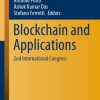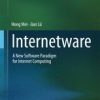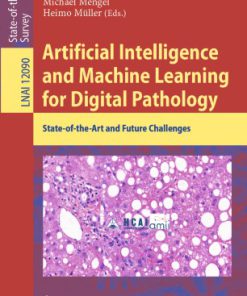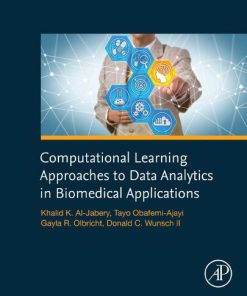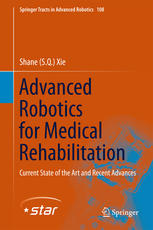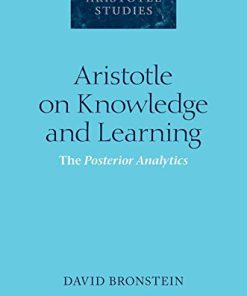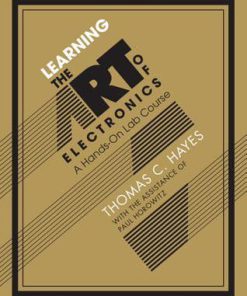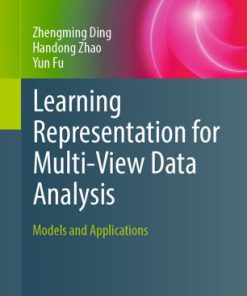Learning Analytics Fundaments Applications and Trends 1st Edition by Alejandro Ayala 3319850296 9783319850290
$50.00 Original price was: $50.00.$25.00Current price is: $25.00.
Learning Analytics Fundaments Applications and Trends 1st Edition by Alejandro Ayala – Ebook PDF Instant Download/Delivery:3319850296,9783319850290
Full download Learning Analytics Fundaments Applications and Trends 1st Edition after payment
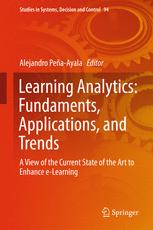
Product details:
ISBN 10:3319850296
ISBN 13:9783319850290
Author:Alejandro Ayala
This book provides a conceptual and empirical perspective on learning analytics, its goal being to disseminate the core concepts, research, and outcomes of this emergent field. Divided into nine chapters, it offers reviews oriented on selected topics, recent advances, and innovative applications. It presents the broad learning analytics landscape and in-depth studies on higher education, adaptive assessment, teaching and learning. In addition, it discusses valuable approaches to coping with personalization and huge data, as well as conceptual topics and specialized applications that have shaped the current state of the art.
By identifying fundamentals, highlighting applications, and pointing out current trends, the book offers an essential overview of learning analytics to enhance learning achievement in diverse educational settings. As such, it represents a valuable resource for researchers, practitioners, and students interested in updating their knowledge and finding inspirations for their future work.
Learning Analytics Fundaments Applications and Trends 1st Table of contents:
1 Learning Analytics in Higher Education—A Literature Review
Abstract
1.1 Introduction
1.2 A Profile of Learning Analytics and Learning Analytics in Higher Education
1.2.1 Learning Analytics
1.2.2 Learning Analytics in Higher Education
1.3 Research Design, Methodology and Execution
1.3.1 Literature Review Procedure
1.3.2 Response to Research Question 1
1.3.3 Response to Response to Research Question 2
1.3.4 Response to Response to Research Question 3
1.3.5 Response to Response to Research Question 4
1.4 Discussion and Conclusion
1.5 Future Trends
1.5.1 Short-Term Trends
1.5.2 Long-Term Trends
Acknowledgements
References
2 Teaching and Learning Analytics to Support Teacher Inquiry: A Systematic Literature Review
Abstract
2.1 Introduction
2.2 Background
2.2.1 Teacher Inquiry
2.2.2 Teaching and Learning Analytics
2.3 Systematic Literature Review Methodology
2.3.1 Research Questions: Research Work Analysis Framework
2.3.2 Inclusion and Exclusion Criteria
2.3.3 Literature Search Strategy
2.4 Systematic Literature Review Results
2.4.1 Results Related to the Teaching Analytics Tasks Employed (RQ1)
2.4.2 Results Related to the Educational Data Types Collected Regarding the Learner (RQ2)
2.4.3 Results Related to the Educational Data Types Collected Regarding the Teacher (RQ3)
2.4.4 Results Related to the Data Analysis Method Used to Process the Collected Teacher and Learner
2.4.5 Results Related to the Focus of Reflection (RQ5)
2.4.6 Results Related to Whether Teachers Were Provided with Recommendations for Supporting Reflecti
2.5 Discussion and Conclusions
Acknowledgements
Appendix
References
3 A Landscape of Learning Analytics: An Exercise to Highlight the Nature of an Emergent Field
Abstract
3.1 Introduction
3.2 A Glance at Learning Analytics
3.2.1 Underlying Domains
3.2.1.1 Computer-Based Information Systems
3.2.1.2 Knowledge-Based Systems
3.2.1.3 Computers in Education
3.2.2 Learning Analytics Related Lines
3.2.2.1 Analytics
3.2.2.2 Analytics in Education
3.2.3 Learning Analytics Nature
3.2.3.1 Background
3.2.3.2 Definitions of Learning Analytics
3.2.3.3 Learning Environments and Resources
3.2.3.4 Stakeholders and Levels
3.3 Learning Surroundings
3.3.1 Learning Paradigms
3.3.1.1 Self-regulated Learning
3.3.1.2 Metacognition
3.3.1.3 Collaborative Learning
3.3.1.4 Learning in Social Settings
3.3.1.5 Natural Language Processing, Discourse, and Conversation
3.3.1.6 Diverse Learning Paradigms
3.3.2 Learning Analytics Baseline
3.3.2.1 Models
3.3.2.2 Frameworks
3.3.2.3 Strategies, Methods, Techniques, and Algorithms
3.3.2.4 Tools
3.3.3 Legal Landscape
3.3.3.1 Governance
3.3.3.2 Ethics
3.3.3.3 Privacy
3.3.3.4 Data Protection
3.3.3.5 Legal Terms
3.3.3.6 Diverse Topics
3.4 Applications
3.4.1 Functionalities
3.4.1.1 Prediction
3.4.1.2 Assessment
3.4.1.3 Performance
3.4.1.4 Feedback
3.4.2 Learner Support
3.4.2.1 Internalization
3.4.2.2 Externalization
3.4.3 Peer Interaction
3.4.3.1 Social Learning Analytics
3.4.3.2 Natural Language Processing
3.4.4 User Support
3.4.4.1 Teaching Support
3.4.4.2 Visualization
3.4.4.3 Time Management
3.5 Conclusions
3.5.1 Discussion
3.5.2 Final Comments
Acknowledgements
References
4 A Review of Recent Advances in Adaptive Assessment
Abstract
4.1 Introduction
4.2 Learning Analytics
4.3 Adaptive Assessments
4.3.1 Psychometrics: Measuring Proficiency Using Item Response Theory
4.3.2 Cognitive Diagnosis: Adaptive Assessment with Feedback
4.3.3 Competence-Based Knowledge Space Theory and Applications
4.3.4 Adaptive Assessment and Recommender Systems
4.3.5 Adaptive Strategies for Exploration–Exploitation Tradeoff
4.3.6 Multistage Testing
4.4 Comparison of Adaptive Testing Models
4.5 Results
4.5.1 ECPE
4.5.2 Fraction
4.5.3 TIMSS
4.6 Discussion
4.6.1 Adaptive Pretest at the Beginning of a Course
4.6.2 Adaptive Test at the Middle of a Course
4.6.3 Adaptive Test at the End of a Course
4.6.4 Other Applications
4.7 Limitations
4.8 The Future of Assessment
4.9 Conclusion
Acknowledgements
References
5 Data-Driven Personalization of Student Learning Support in Higher Education
Abstract
5.1 Introduction
5.1.1 The State of Data-Driven Student Support
5.1.2 Local Contexts Influencing Data-Driven Student Support
5.1.3 Our Approach to Data-Driven Student Support
5.2 The Student Relationship Engagement System
5.2.1 Supporting Pressing Needs in Local Contexts
5.2.2 Approach and Philosophy for Design and Development
5.2.3 Flexibility in Importing Students and Data
5.2.4 Mobile Interface for Staff
5.2.5 Querying Interface and Messaging Engine
5.2.6 System Adoption, Usage, and Impact
5.2.7 Experimental Interfaces
5.3 Discussion
5.3.1 Amplifying Teacher Intelligence
5.3.2 Enabling Scaling-Up of Data-Driven Student Learning Support
5.4 Conclusion
Acknowledgements
References
6 Overcoming the MOOC Data Deluge with Learning Analytic Dashboards
Abstract
6.1 Introduction
6.2 How This Work Enhances the LA Field
6.2.1 Problem Statement
6.2.2 Related Work to Dashboards
6.3 Design and Development of the Dashboard
6.3.1 What Is the Most Appropriate Tool to Build the Dashboard in?
6.3.2 How Can We Best Answer the Questions Posed?
6.3.3 How Can We Make Use of Effective Visual Design?
6.4 Building the Dashboards
6.5 Evaluating the User Experience
6.5.1 Study Design
6.5.2 Apparatus
6.5.3 Participants
6.6 Results
6.6.1 Activity Analysis
6.7 System Usability Analysis
6.8 Post-interview Questionnaire Analysis
6.8.1 What Guidance/Training Do You Think Is Necessary to Use the Dashboard?
6.8.2 Which Features Were Most Useful and Why?
6.8.3 Are There Any Additional Features You Would like to See?
6.9 Conclusion and Future Directions
Appendix
References
7 A Priori Knowledge in Learning Analytics
Abstract
7.1 Introduction
7.2 A Priori Knowledge
7.2.1 APK of Student, Teacher, Learning Analytics
7.2.2 Learning Theories
7.2.3 Other Paradigms of a Priori Knowledge
7.3 The 2-Level Framework
7.3.1 Learning Analytics Seen as a Level 2 Learning Process
7.3.2 Five Characteristics of Learning Analytics
7.3.3 Comparison with Other Frameworks
7.4 Relationship Between APK and LA According to the 2-Level Framework
7.4.1 Papers Identification
7.4.2 A Priori Knowledge and Stakeholders
7.4.3 A Priori Knowledge and Goals
7.4.4 A Priori Knowledge and Data
7.4.5 A Priori Knowledge and Technical Approaches
7.4.6 A Priori Knowledge and Feedback
7.5 An Insight of APK, Learning Theories and LA Ties
7.5.1 Learning Analytics and Assessment
7.5.2 Learning Theories and Learning Analytics
7.5.3 A Priori Knowledge and Learning Theories
7.6 Conclusion
References
8 Knowledge Discovery from the Programme for International Student Assessment
Abstract
8.1 Introduction
8.2 Background and Related Work
8.2.1 Toward Big Data LA
8.2.2 On Educational Data Analysis Using Clustering
8.2.3 LA Approaches Oriented to Analyze PISA Repositories
8.3 The PISA Profile
8.3.1 The Finnish Educational System and the PISA
8.3.2 Characteristics and Forms of the PISA Data
8.3.3 Rasch Model
8.3.4 Plausible Values
8.4 Comparison of Students in PISA 2012 Countries Using Aggregated Hierarchical Clustering
8.4.1 Variables for the Clustering
8.4.2 Hierarchical Clustering
8.5 Results
8.5.1 Visualization and Profiling of the Clusters
8.5.2 Differences Between All the Global Clusters
8.5.3 Differences Between Finland and the Other Countries Within the Europe Cluster
8.5.4 Europe Cluster in Comparison to the Nordic/English-Speaking Cluster
8.6 Visual LA of the PISA Results
8.7 Discussion
8.8 Conclusions
Acknowledgements
References
9 A Learning Analytics Approach for Job Scheduling on Cloud Servers
Abstract
9.1 Introduction
9.2 A Glance on Learning Analytics
9.2.1 Learning Analytics Methods
9.2.2 Learning Analytics Models
9.3 Learning Analytics in Educational Institutions
9.3.1 The Course Signals Method
9.3.2 The Relationship Between Student Social Networks and Sense of Community
9.3.3 The Learning Analytics Methodology for Student Profiling
9.3.4 The Genetic and Participation Based Student Prediction Model
9.3.5 The Learning Analytics Method Based on Academic Achievements of Students and Interaction Data
9.4 Background on Job Scheduling in Cloud Computing
9.5 Learning Analytics in Cloud Computing
9.5.1 Main Analytics Components in Educational Systems
9.5.2 Job Scheduling in Cloud Computing
9.5.3 Scheduling Framework
9.5.4 The Network Model
9.5.5 The Proposed Learning Analytics Approach for Job Scheduling on Cloud Servers
9.6 Evaluation Results
9.6.1 Simulation Setup
9.6.2 Simulation Results
9.6.3 Comparison Results
9.7 Discussion
9.8 Conclusions
People also search for Learning Analytics Fundaments Applications and Trends 1st :
learning analytics examples
benefits of learning analytics
analytics fundamentals
data analytics fundamentals
learning analytics framework
Tags:
Alejandro Ayala,Fundaments,Analytics,Applications
You may also like…
Computers - Artificial Intelligence (AI)
Engineering
Politics & Philosophy - Anthropology
Aristotle on knowledge and learning : the posterior analytics 1st Edition Bronstein
Computers - Computer Science
Education Studies & Teaching
Computers
Learning Representation for Multi-View Data Analysis: Models and Applications Zhengming Ding
Psychology - Psychotherapy
Learning the Art of Helping: Building Blocks and Techniques Mark E. Young


